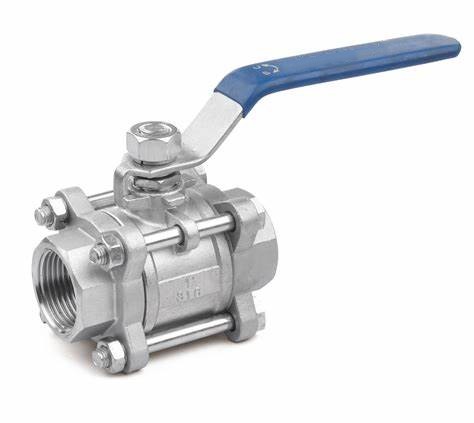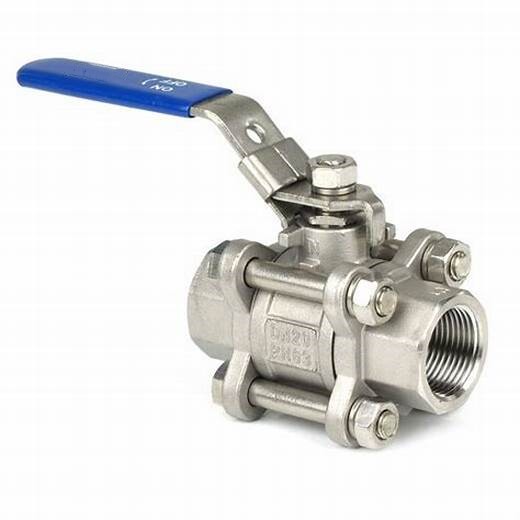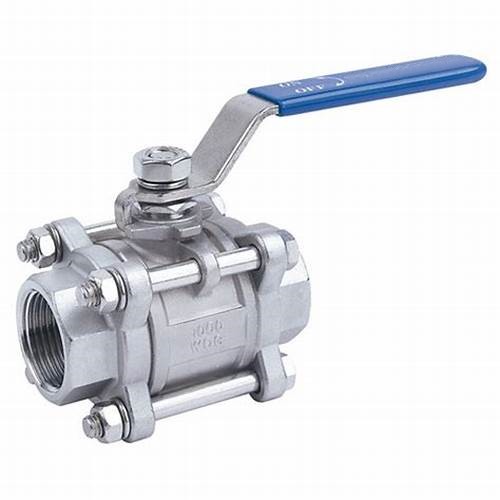Premium Stainless Ball Valves | AI-Optimized Performance
Unlock the next generation of fluid control with stainless ball valves — engineered for durability, precision, and optimal performance across industries.

Industry Trends & Market Outlook for Stainless Ball Valves
According to MarketsandMarkets, the global industrial valve market, including stainless ball valves, is projected to reach over USD 85 billion by 2028, with stainless steel valves accounting for ≈28% market share. Growth is driven by:
- Increasing demand for anti-corrosive and long-life solutions in petrochemical, power, and water treatment sectors.
- Rising adoption of high temperature stainless steel ball valves due to process intensification and green energy initiatives.
- Ongoing advancements in precision manufacturing and smart monitoring.
Stainless steel threaded ball valve and trunnion-mounted configurations are especially prominent in systems requiring reliable shut-off and leak-proof functionality.
Key Parameters of Stainless Ball Valves (Industry Overview)
| Type | Material Grade | Pressure Rating | Temp. Range (°C) | Connection | Standard |
|---|---|---|---|---|---|
| 1-PC/2-PC/3-PC Ball Valve | CF8, CF8M, 304, 316 | PN16~PN100, Class 150/300 | -20 to 450 | Threaded/Welded/Flanged | ANSI, DIN, JIS, ISO |
| Stainless Steel Threaded Ball Valve | 304, 316, 316L | PN25~PN63 | -10 to 350 | BSP, NPT, DIN259 | ISO9001, API607, CE |
| High Temp. Stainless Ball Valve | 316Ti, 321 | PN16~PN100 | up to 600 | Flanged | ANSI B16.34, ISO5211 |
Introducing the 3PC Dn-50-600mm Stainless Steel Ball Valve
The 3PC Dn-50-600mm Stainless Steel Ball Valve (Product Link) stands out in the global fluid control market. Engineered from high-grade 304/316 stainless steel with an innovative three-piece construction, this valve offers fast maintenance access, superior pressure integrity, and optimal flow control for both general-purpose and demanding applications.

- Size Range: DN50 – DN600mm (2”–24”) covers broad industrial pipeline requirements.
- Pressure Ratings: Up to PN100 (~1450 psi) for demanding service.
- Temperature range: -20°C to 450°C for high temperature stainless steel ball valves applications.
- Connection Types: Threaded (BSP/NPT), Flanged (ANSI/DIN/JIS), Welded.
- Compliance: Stringently tested per ISO9001, API607 fire-safe, ANSI B16.34.
- Actuation Options: Manual, pneumatic or electric automation (ISO5211 mounting pad).
- Material Options: SS304, SS316, SS316L, special alloys for corrosion or high-temp resistance.
Manufacturing Process of Stainless Ball Valves
- Material Selection: Premium certified stainless steel (304/316) billets sourced for body, ball & stem.
- Casting/Forging: Valve body, end caps, and stem are formed via precision sand casting or hot forging for high mechanical strength.
- CNC Machining: All components undergo digital CNC for critical tolerances, smooth surfaces, and leak-proof seat interfaces.
- Polishing & Surface Finish: Automated & manual polishing to RA≤0.8μm reduces corrosion risk and flow resistance.
- Seat & Seal Installation: PTFE, PEEK, or graphite seats installed based on temp/chemical compatibility.
- Assembly & Tightening: Three-piece design is assembled with precision torque spec to ensure concentricity and end-load strength.
- Testing & Certification: 100% hydrostatic (shell & seat), pneumatic, and fire-safe testing as per API 598/ISO 5208.
- Marking & Packaging: Permanent laser etching of code, traceability, and anti-corrosive export packaging.
This rigorous process ensures stainless steel ball valve service life & compliance even in aggressive environments like petrochemical plants and offshore installations.
Schematic: Stainless Ball Valve Production Flow

Technical Specifications: 3PC Dn-50-600mm Stainless Steel Ball Valve
| Parameter | Value | Standard/Remark |
|---|---|---|
| Valve Size (DN) | DN50 – DN600 | 2”–24” |
| Material | CF8, CF8M, 304, 316, 316L | ASTM A351 / EN10213 |
| Pressure Rating | PN16/PN25/PN40/PN63/PN100 | ISO, ANSI B16.34 |
| Temperature Range | -20°C to 450°C | Varies by seat material |
| Connection | Threaded/Flanged/Welded | BSP/NPT/ANSI/DIN/JIS |
| Operation | Manual/Pneumatic/Electric | ISO5211 pad |
| Test Standard | Hydrostatic, Air, Fire-Safe | API 598, API 607, ISO5208 |
| Estimated Lifespan | ≥ 20 years | Typical process use |
Size vs. Pressure Ratings
Connection Styles Used
Estimated Valve Lifespan
Product Comparison: 3PC Stainless Steel Ball Valve vs. Typical Alternatives
| Feature | 3PC SS Ball Valve | Brass Ball Valve | Butterfly Valve |
|---|---|---|---|
| Corrosion Resistance | Excellent (Salt, Acid, Offshore) | Moderate (Fresh Water Only) | Good, but seat limited |
| Pressure Rating | PN16~PN100 | PN10~PN25 | PN6~PN16 |
| Max. Temp (°C) | 450 | 120 | 120–200 |
| Maintenance | Easy (3PC design, in-place) | Limited (replace only) | Moderate |
| Life Expectancy | ≥20 years | 7–10 years | 10–12 years |
| Certifications | API, ISO, CE, Fire-Safe | CE | CE |
Application Scenarios and Advantages of Stainless Ball Valves
Stainless ball valves are indispensable in critical fluid handling due to their anti-seizing operation, compactness, fire-safe design, and zero-leakage seat. The 3PC Dn-50-600mm Stainless Steel Ball Valve delivers unmatched operational reliability in:
- Petrochemical & Refining: Handles sour, acidic, and high-P&T media per ISO15156 — 316/316L construction resists hydrogen cracking.
- Power Generation: High temperature stainless steel ball valves safely isolate superheated steam and boiler chemicals.
- Water/Wastewater: Non-corrosive, hygienic construction fits potable, desal, and effluent streams.
- Food & Pharma: FDA-compliant seat options, electropolish finish (-0.8μm) minimize contamination risk.
- Mining & Minerals: Abrasion-resisting balls and PTFE seats optimize duty cycles in slurry lines.
- HVAC & District Energy: High cycle life and ease of actuation for frequent on-off control.

Technical advantages: Corrosion-proof, anti-static, blowout-proof stem, live-loaded packing, cavity pressure relief, and fire-safe certification (API607, ISO10497) guarantee safe, reliable, and sustainable service.
Manufacturer Comparison, Certifications & Custom Solutions
| Manufacturer | Key Certificates | Top Clients/Fields | Custom Services | Warranty |
|---|---|---|---|---|
| HBYS Valves | ISO 9001, API 607, CE | Sinopec, Veolia, PetroChina, BASF | Material/alloy, seat, actuation, traceability | 24 months |
| Emerson/ASCO | ISO, PED, Fire-Safe, SIL3 | Shell, Aramco, Dow | Sizing, SIL approval | 12–18 months |
| KITZ Valve | ISO, JIS, Fire-Safe | Toshiba, Hitachi | JIS/DIN design, special alloys | 18 months |
HBYS Valves’ 20+ years of project experience, strong supply chain, and global service centers make it a reliable choice for major energy, chemical, and infrastructure projects.

Customization: From special seat materials (PEEK, TFM, graphite) to low-emission packing, smart monitoring ports, and special surface coatings (electropolish, PTFE), most parameters can be defined by project/specification.
Order, Delivery, and Support Commitment
- Order Cycle: Standard designs ship in 7–15 days; customization (special alloys, automation) 4–6 weeks.
- Warranty: 24-month warranty against material/workmanship defects; extended warranty available for long-term EPC or O&M contracts.
- Global Technical Support: Multi-channel (email, phone, remote-video) support, 24-hour response, on-site commissioning & training for major projects.
- Documentation: All valves supplied with full MTC, pressure/leak test report, serial tracking, and installation guide.
- Certification: Third-party witnessed inspection (SGS, TUV, Lloyd’s) available on request.
Project Cases & User Experience
1200+ stainless steel ball valves (DN100–DN450) used in SWRO facility, continuous operation >5 years, zero reported leak failure. Customer noted “post-upgrade energy savings of 6% attributed to lower pressure drop and tight shut-off”.
Project required 620 fire-safe, anti-sour gas 3PC valves (SS316L+PEEK) for high temperature loops. Factory supplied full DCS automation. Audit inspection verified seat tightness, anti-static device, MTC traceability to ASTM and GB/T standards.
Electropolished, cavity-fill 3PC valves certified per FDA & USP VI, zero external threads/crevices left exposed, minimized cross-contamination and sterilization downtime. Operator “praised for swapping seats in-place without disassembly”.
FAQ: Technical Terms about Stainless Ball Valves
- Q1: What is the difference between CF8, CF8M, SS304, and SS316 in ball valves?
- CF8/SS304 are basic austenitic stainless grades, suitable for water and neutral fluids. CF8M/SS316 contains molybdenum, offering superior resistance to chlorides, acids, and marine environments—preferable for harsh/chemical applications.
- Q2: What does the term "fire-safe design" in stainless ball valves mean?
-
The Key to Fluid Control: Exploring the Advantages of Ball Valves in Industrial SystemsNewsJul.09,2025
-
The Versatile World of 1, 2, and 3 Piece Ball ValvesNewsJul.09,2025
-
Stainless Steel Ball Valves: The Ideal Choice for Efficient Flow ControlNewsJul.09,2025
-
Optimizing Fluid Control with Ball Float ValvesNewsJul.09,2025
-
Manual Gate Valves: Essential for Control and EfficiencyNewsJul.09,2025
-
Everything You Need to Know About Butterfly ValvesNewsJul.09,2025
-
The Versatility of Wafer Type Butterfly ValvesNewsJul.08,2025




